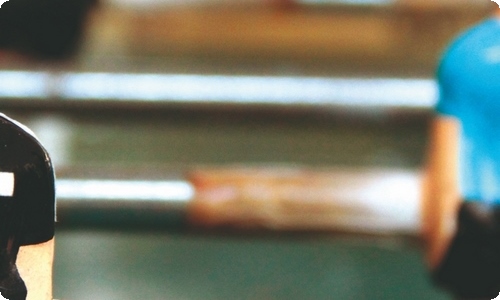
【精华】熊猫介绍英语作文3篇
在学习、工作、生活中,大家都不可避免地会接触到作文吧,作文是从内部言语向外部言语的过渡,即从经过压缩的简要的、自己能明白的语言,向开展的、具有规范语法结构的、能为他人所理解的外部语言形式的转化。作文的注意事项有许多,你确定会写吗?以下是小编为大家收集的熊猫介绍英语作文3篇,希望能够帮助到大家。
熊猫介绍英语作文 篇1
Panda has a black and white coat.Adults measure around 1.5 meters long and around 75 centimeters tall at the shoulder.It has a body shape typical of bears.
It has black fur on its ears,eye patches,muzzle,legs,arms and shoulders.The rest of the animal's coat is white.
The lovely panda is one of the few animals that has been surviving for millions of years on the earth.
It's a moving antique now.
Care has to be taken though as the number is dwindling due to deforestation by mankind,hunting by unscrupulous hunters for money,reduction in food (baby bamboos) and also difficulty in conceiving.
熊猫介绍英语作文 篇2
óD1Dü¨μó¢ó×÷Pandathe National TreasurePanda is one of the scarcest animals. People in the world like it very much. There used to be many pandas in China long ago. As the balance of nature was destroyed and the weather was getting warmer and warmer, pandas became less. But at present, the number of pandas is increasing year by year. There are now so many pandas that some are being sent to other countries so that people there can enjoy them.Nowadays, the biggest nature park for panda in China is in Sichuan. There is a research centre for nature and wild life there. Scientists hope that one day they will have enough pandas to be set free and let them live in the wild again.
熊猫介绍英语作文 篇3
国家一级保护动物大熊猫,你们看见过大熊猫吗?快来看看吧!下面的就是一只可爱的大熊猫,看它吃的多香呀!笑的那么可爱。
你们说,熊猫为什么那么少,就是因为人类的破坏乱砍树木,不爱护花草,破坏大气层,才导致熊猫的减少,所以我们要爱护熊猫,大熊猫可是食草动物知道吗,最爱吃竹子,但是在动物园里的大熊猫可不一样饲养员们给他们喂水果吃。熊猫趣闻:近几年,科学家的.野外隐藏摄像机发现,雄性野生熊猫在树上留下气息记号时,会抬起一条后腿,像公狗一样,然后把尿往树的高处撒去。尿撒得越高,雄性大熊猫的社会地位也就越高。好玩吧!跟狗一样哈哈!真好玩。在北郊的斧头山上,大家建立起郁郁葱葱的竹海与森林,形成与成都市区不同的“小气候”,1987年,正式建成,现已经发展成为一个专门从事濒危野生动物研究、繁育、保护教育和教育旅游的非营利性机构。
你们知道大熊猫怎么消化竹子的吗?科研人员发现,大熊猫的消化道粗短而又简单,没有一般食草动物细长的肠道和复杂的胃或发达的盲肠。此外,在大熊猫的基因序列于20xx年公布之后,他们还发现大熊猫消化道内缺乏一些帮助食草动物消化纤维素和半纤维素(它们是纤维性植物饮食的主要成分)的酶。这让科研人员感到非常困惑,缺乏这些必要条件的大熊猫是如何消化竹子的呢?
科研人员利用基因测序技术,分析5000多个核糖体RNA序列,最终在大熊猫体内发现了多种消化道微生物,而且和一些食草动物体内的微生物非常类似。这些都有助于动物消化体内的纤维素,而且其中有了7种是熊猫消化道内独有的。拜拜!
The national level protection animal giant panda, have you ever seen giant pandas? Come and see! The following is a lovely giant panda, see how delicious it eats! The smile is so lovely.
You said, why so little panda, it is because of the destruction of the human disorderly cut down trees, don't take care of flowers and plants, destruction of the atmosphere, to lead to a drop in the panda, so we have to take care of the panda, the giant panda is herbivorous animals know, likes eating bamboo, but not as the giant pandas in the zoo keepers to feed their fruit. Wild panda anecdotes: in recent years, scientists found hidden cameras, male wild pandas left a breath marks on a tree, will lift a leg, like a male dog, and then the urine to the heights of the tree and. The higher the urine, the higher . the social status of the male giant panda. Good play! Just like a dog! This is fun. Ax mountain in north of the city, we established a lush bamboo sea and the forest, form different from downtown cheng du "microclimate", in 1987, formally completed, now has developed into a specialized in endangered wildlife research and breeding, protection of education and education tourism, a nonprofit organization.
Do you know how pandas digest bamboo? Researchers have found that the giant panda's digestive tract is short and simple, and there is no such thing as a long, plant-eating animal with a thin gut and a complex stomach or a developed cecum. In addition, the giant panda's genome sequences announced in 20xx, after they found the giant panda to the lack of some help in the digestive tract herbivores digest cellulose and hemicellulose (they are the main components of the fibrous plant diet) enzymes. This is confusing for researchers, and how does the lack of these necessary conditions digest bamboo?
Researchers use of gene sequencing technology, analysis of more than 5000 ribosomal RNA sequences, eventually in the giant panda, found a variety of digestive tract bacteria and some microbes are very similar to grazing animals. These help animals digest cellulose in their bodies, and seven of them are unique to the panda's digestive tract. Bye bye!



![英语作文[优秀5篇]](https://img.puzw.com/upload/2612.jpg)
![[必备]学英语作文6篇](https://img.puzw.com/upload/7170.jpg)